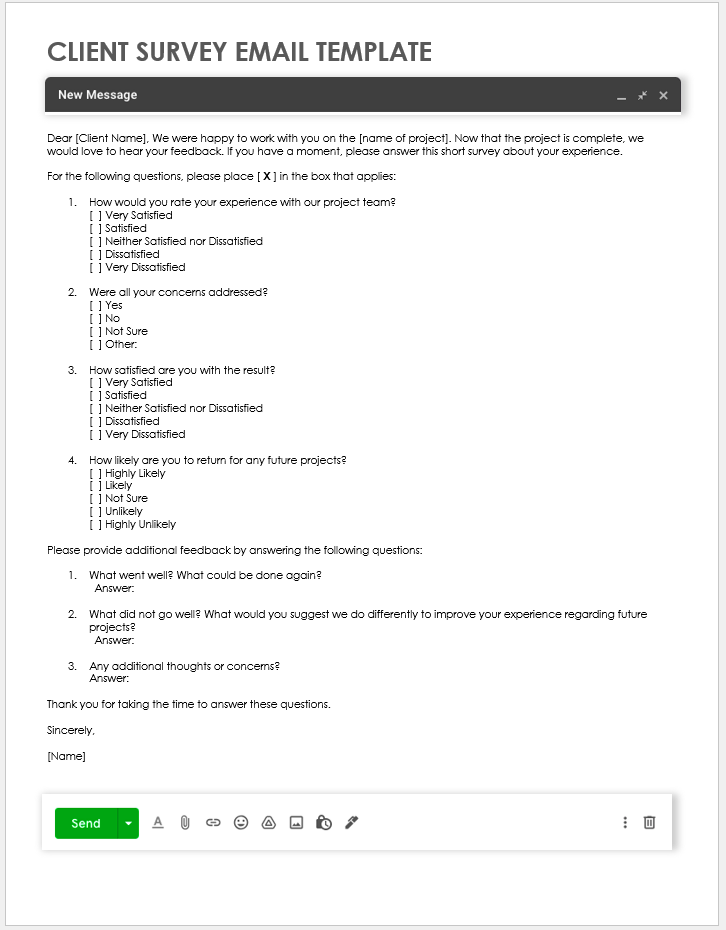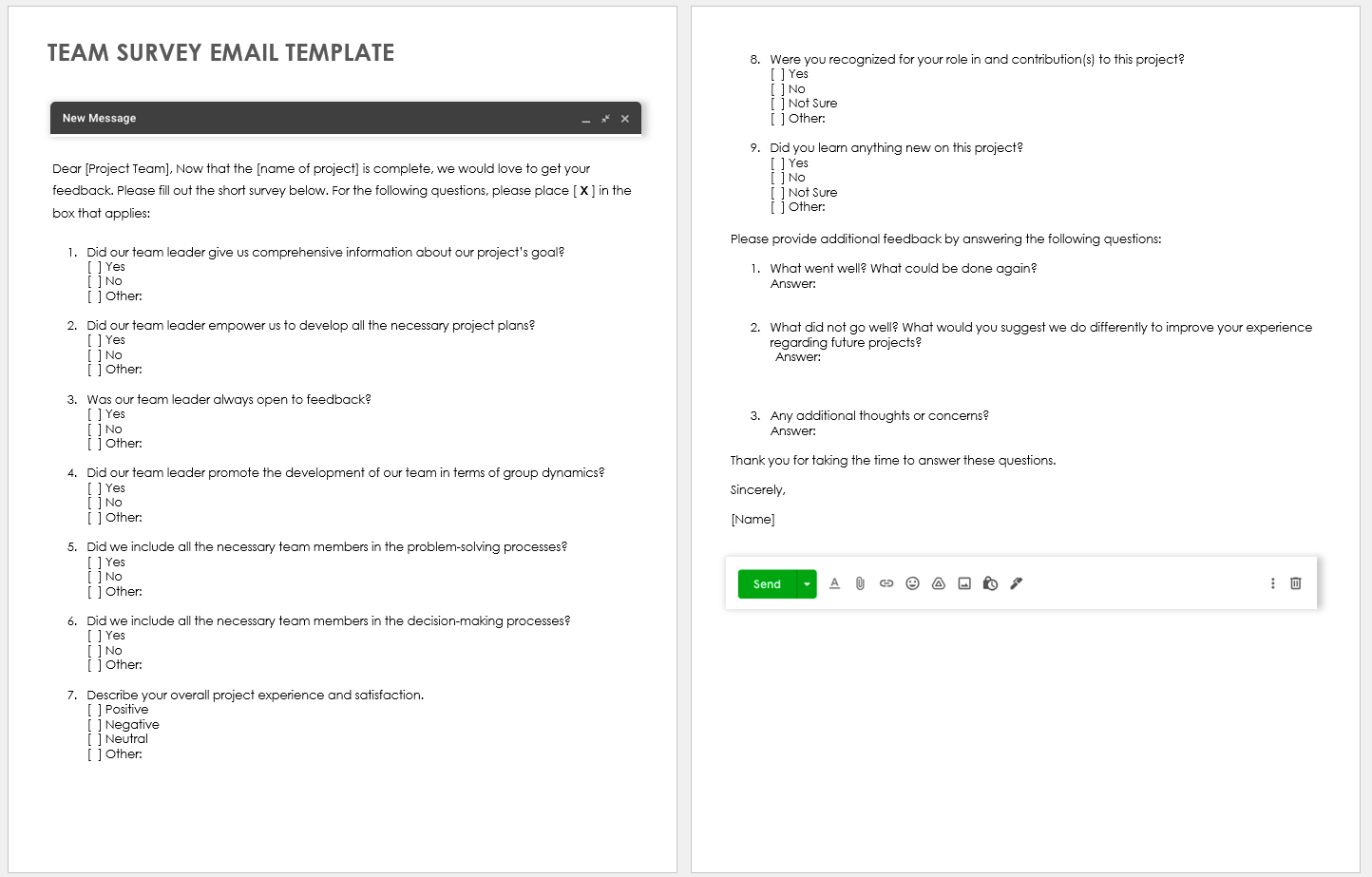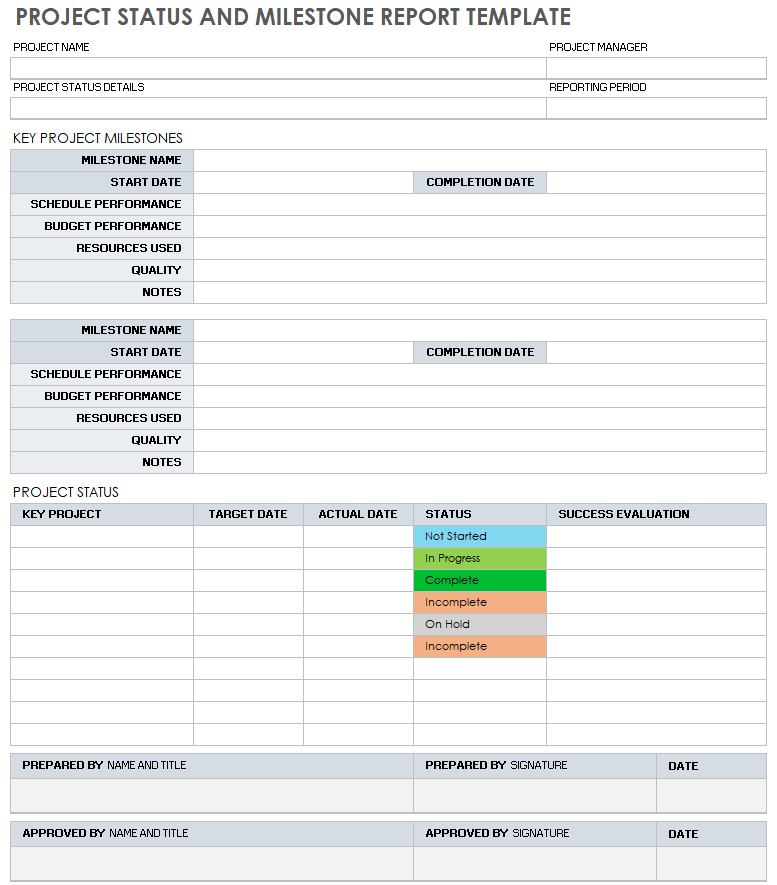What Is Project Success?
The term project success refers to the specific criterion established by the client and the project team before the project begins. Teams use these specifications, milestones, and deliverables to evaluate project success after project close.
The Importance of Measuring Project Success
It's important to measure the success of a project so the project team can track progress and identify any process improvements. Measuring project success provides valuable insight into customer and team satisfaction, aids in continuous improvement, and supports future decisions.
Hassan Osman, Project Management Office Director at Cisco and author of the blog The Couch Manager, states, “Measuring project success is important because that's how you determine how effective a project truly is. The success factors are usually dependent on the initial goals of the project, which include objective and subjective metrics.”
The Role of the Project Lifecycle in Project Success
You can measure the success of a project by looking at each phase of the project lifecycle, from initiation to planning, execution, and closure:
- Initiation: This phase identifies the scope and deliverables of the project. Completed deliverables can determine a project's success.
- Planning: Establish a workflow, resources, and budget. The accuracy of this planning contributes to a project's success.
- Execution: This phase monitors the budget, progression, and quality of work. The performance of these elements can measure a project's success.
- Closure: This phase analyzes the completion of milestones and deliverables, which directly impact the success of a project.
Project Evaluation
Project evaluation allows a project team to reflect on the success and failure of a project based on metrics set by the team.
As Osman suggests, “Properly defining your measures and tolerance levels before you start helps set the right expectations for everyone. A best practice is to define your success factors before you start the project. One idea is to think through how slipping on one of the three main constraints — time, cost, and scope — would affect the measure of success after you close the project out. For example, some projects would consider a two-week slip on the schedule and a 2 percent increase in cost as a major success. With other projects, that same schedule slip and cost increase might be a complete failure.”
How Do You Measure the Success of a Project?
You can measure the success of a project by reviewing project scope, evaluating project specifications, analyzing the project budget, and reviewing client and internal satisfaction.
These steps are described below.
Step 1: Review the Scope of the Project
Start by reviewing the requirements and deliverables that the team agreed upon at the beginning of the project. For each deliverable, note the required resources, tasks, and the time it took to complete.
Step 2: Evaluate the Project Specifications
Did the project meet the expectations and goals? You can determine this by assessing whether or not all the deliverables are completed and agreements are met within the expected timeframe.
Step 3: Analyze the Project Budget
The budget can be an essential indicator of project success. Look at the amount of time spent on the project, and whether or not it exceeded the budget.
Step 4: Review Client Satisfaction
Client satisfaction with the project result is vital. If they are not fully satisfied, they must be allowed to provide feedback, which you can take as insight for future projects to help generate repeat business.
Step 5: Review Internal Growth and Team Satisfaction
It's important that the project team feels good about their role and the project's result. Was the project challenging and interesting? Is the team satisfied with the quality of the deliverables? These factors contribute to the project team's sense of fulfillment and job satisfaction.
Client Survey Email Template
Download Client Survey Email Template — Microsoft Word
Use this template to email a survey to the client to gauge their satisfaction and invite their feedback after the project is complete. The survey covers interaction with the project team, overall satisfaction, and future projects. The questions include yes or no options and space for written responses, so the client can share their thoughts and experience.
Team Survey Email Template
Download Team Survey Email Template — Microsoft Word
Use this template to email a survey to the project team to gain their feedback after the project is complete. The survey covers leadership, teamwork, and overall experience working on the project. The questions include yes or no options, scaled replies, and free-response types, so the team can share their thoughts and experience.
Project Status and Milestone Report Template
Download Project Status and Milestone Report Template — Microsoft Excel
Use this template to generate a report that enables you to look at the project's progression and whether or not it was successful in meeting each milestone. The template highlights three key project milestones and their success criteria. Additionally, you can evaluate the project status and whether or not it met the projected timeline.
Project Success Kit
Download the above templates to help measure the success of your project in this single, easy-to-download file.
How to Document Project Success Criteria
Project success criteria encompass the overall project management and project deliverables. It's important to document project success criteria to ensure that the expected cost, scope, and time are on track to meet expectations. Criteria documentation can take the form of budgets, milestones, and timelines.
To learn more about how to determine project success criteria, read our comprehensive guide.
Examples of Project Success
In their 2017 paper “Project Management Success Factors,” authors Dr. Mladen Radujkovic and Mariela Sjekavica provide a project management success breakdown to highlight three distinct categories of project success factors:
- Elements of Project Management Competencies: Elements include the technical, behavioral, and contextual competencies of the project manager and project team members. Competence is measured by knowledge of best practices and the ability to perform to expected standards within the project environment.
- Elements of Organization: Elements include the structure, culture, atmosphere, and organization competence. Organization is especially important for teams that manage more than one project at a time.
- Elements of Project Management Methodologies, Methods, Tools, and Techniques: Elements include methodologies, software, tools, decision-making techniques, risk assessment tools, and information communication technology support tools. A project manager should know which tools and methods will be best for each project.
As Radujkovic and Sjekavica write, “Theoretically, if you have a competent project manager, competent team, coordinated manager and team, adequate organizational structure, culture, atmosphere and competence, as well as high usage of project management methodologies, methods, tools, and techniques, your project should have highly successful project management, and enable project success.”
Examples of project success include the following:
- Execution of tasks and milestones
- On-time project completion
- On-budget project completion
- Positive impact on the future of firm
- Project team fulfillment with their completed work
- Quality deliverables are executed and completed to client’s satisfaction
You can learn more about project success factors in this article.
Additional Ways for Remote Teams to Measure Project Success
A remote team functions nearly the same as a non-remote team, but they may have additional ways to measure a project’s success. For instance, a remote team can look at how well their project team navigates communication and coordination despite spanning different time zones and cultural differences.
Read our article about remote team communication strategies to learn more.
As Osman notes, “For the most part, working on a project with a remote team doesn't necessarily affect your project success metrics if you're targeting a measurable end result. That's because with remote work, the main difference is in how and where the work gets done, as opposed to what gets done. Having said that, one thing that could differ between remote teams and co-located teams are the subjective measures of collaboration, communication, and team dynamics. With co-located teams, those measures tend to be a bit higher due to improved team cohesion and intimacy, which could result in a better overall project outcome. Nevertheless, the effect of that is highly contextual and dependent on the type of team that you work with.”
You can learn more about remote collaboration tools in this comprehensive guide.
Accurately Measure Project Success with Smartsheet for Project Management
From simple task management and project planning to complex resource and portfolio management, Smartsheet helps you improve collaboration and increase work velocity -- empowering you to get more done.
The Smartsheet platform makes it easy to plan, capture, manage, and report on work from anywhere, helping your team be more effective and get more done. Report on key metrics and get real-time visibility into work as it happens with roll-up reports, dashboards, and automated workflows built to keep your team connected and informed.
When teams have clarity into the work getting done, there’s no telling how much more they can accomplish in the same amount of time. Try Smartsheet for free, today.



